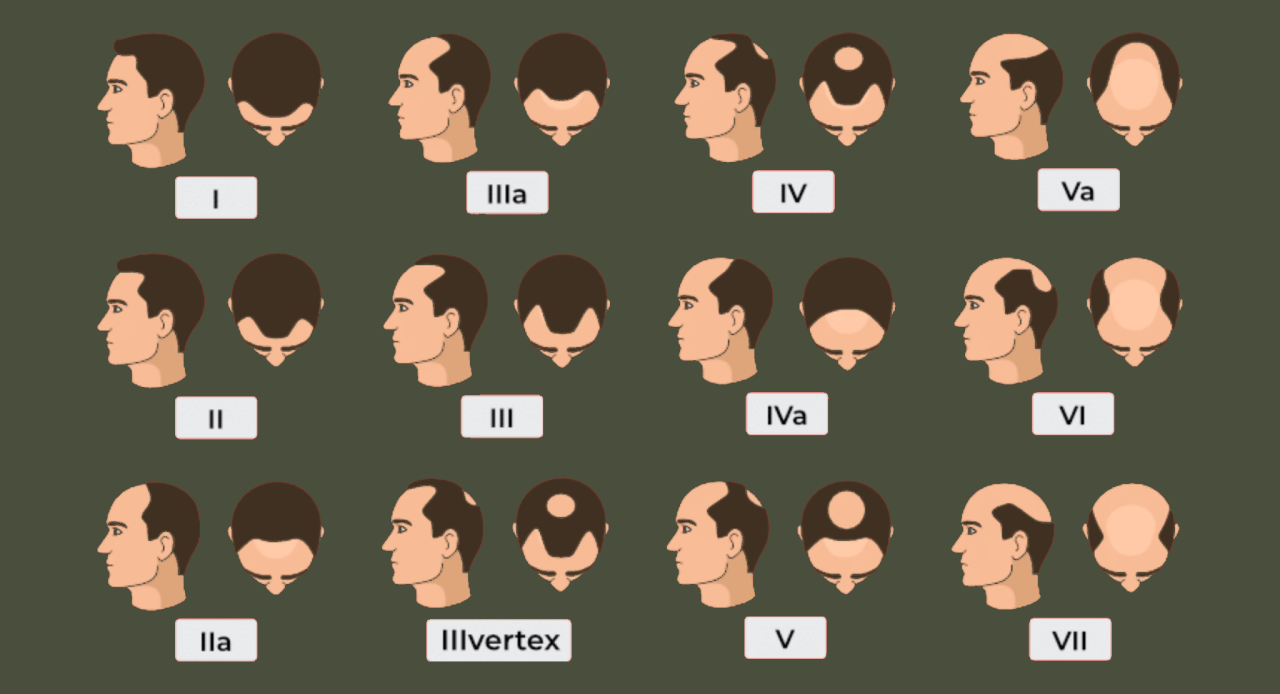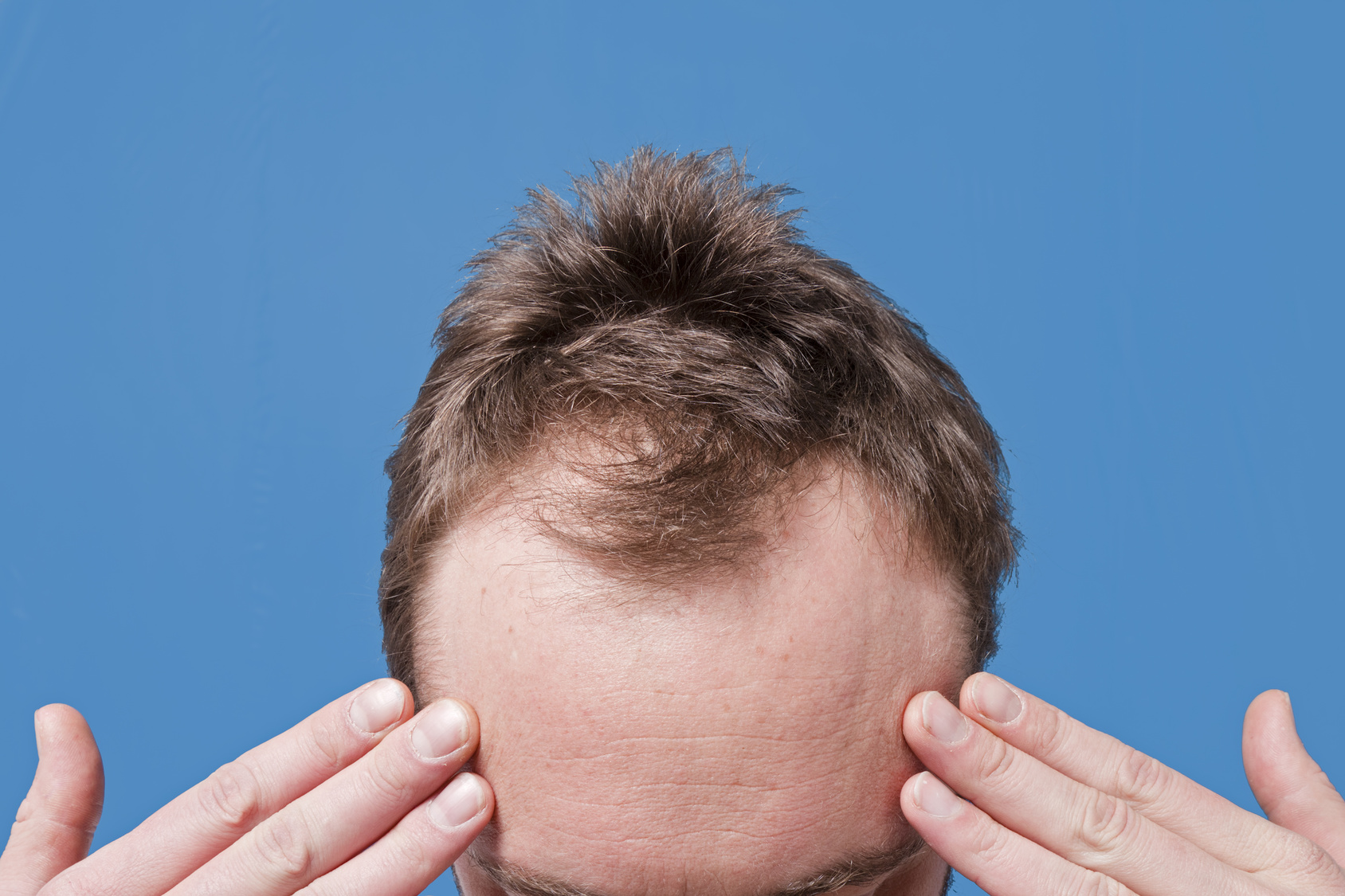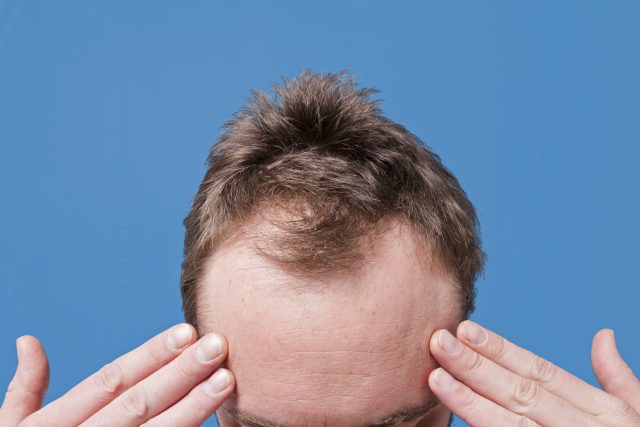When it comes to hair loss, not all guys go through it the same way. Some thin out at the temples, others lose hair on the crown, and a few hold onto a full head of hair for life. That’s where the Norwood scale (also known as the Hamilton-Norwood scale) comes in.
It’s the most commonly used system to classify male pattern baldness (androgenetic alopecia), breaking hair loss into seven stages. Whether you’re just noticing your hairline creeping back or already rocking the classic horseshoe pattern, the Norwood scale helps you (and your doctor) understand where you’re at and what your options are.
Let’s break it down, stage by stage.

The 7 Stages of Hair Loss
Stage 1 – No Big Deal
No real hair loss. Maybe a tiny bit of thinning, but most guys at this stage look unchanged. Some men will stay here their whole lives.
Stage 2 – The Mature Hairline
Recession starts at the temples, usually symmetrical. Think of it as your “adult” hairline. Not necessarily baldness — just different from the teenage look.
Stage 3 – The First Signs of Balding
Now it’s noticeable. The hairline recedes into an M or V shape. For some guys, the crown (vertex) also starts thinning. This is the earliest stage officially considered baldness.
3A: More frontal hair loss
3 Vertex: More crown thinning.
Stage 4 – The Gap Appears
Deeper recession at the temples and a thinning (or bald) crown. A strip of hair often separates the two balding areas.
Stage 5 – The Horseshoe Emerges
That strip of hair between the crown and hairline gets thinner. Baldness is obvious, and the “horseshoe” pattern starts to take shape.
- 5A: Even less separation between hairline and crown.
Stage 6 – Severe Loss
The front and crown bald patches connect. Only a band of hair on the sides and back remains.
Stage 7 – The Final Stage
The most advanced stage. Just the classic horseshoe of hair at the back and sides, with little to no density.
Why Hair Loss Happens
The main culprit? Genetics.
If your hair follicles are sensitive to a hormone called dihydrotestosterone (DHT), they gradually shrink (miniaturise) until they stop producing new hair. That’s why male pattern baldness usually runs in families.
Hair also follows a natural growth cycle:
Why Hair Loss Happens
- Anagen: Growth phase.
- Catagen: Transition phase.
- Telogen: Resting phase.
- Exogen: Shedding phase.
In men with hair loss, more hairs move into the shedding phase than the growth phase — which is why density drops over time.
What You Can Do About It
Here’s the straight-up truth: the earlier you act, the better your chances of holding onto your hair.
- Early stages (2–3): Medications like finasteride (blocks DHT) and minoxidil (stimulates growth) can slow down or even reverse loss.
- Mid stages (4–5): Treatments may still help, but hair restoration surgery could be considered.
- Advanced stages (6–7): Hair transplants are usually the only option if you want coverage — but you need enough donor hair for it to work.
The Mr. Takeaway
The Norwood scale is a simple way to map out male pattern baldness:
- Stages 1–2: Little to no visible loss.
- Stages 3–5: Noticeable balding.
- Stages 6–7: Advanced baldness with the horseshoe pattern.
If you’re starting to see your hairline move or your crown thin, don’t wait. Early treatment gives you the best shot at keeping your hair. And even if you’re further along, options like surgery exist — just know results vary.
At the end of the day, whether you keep it, fight it, or embrace it, hair loss is a journey almost half of men will go through. Understanding where you’re at is the first step in deciding what’s right for you.

Dr Afraz Adam
Chief Medical Officer
MBBS. FRNZCUC





